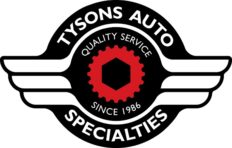Gasoline 101
What are the differences between the grades of gas you put in your car?
How does this affect performance?
With gas prices reaching for the clouds, you may be tempted to go for the lower grade when it’s time to top off the tank. For most of the motoring world, that’s not a problem, but what about the rest of the cars out there whose owner’s manuals call for mid grade or high test? While you may see an immediate savings at the pump, running your engine off of a fuel other than what the manufacturer recommends will end up hurting you in the long run.
Everyone knows that gasoline is made from crude oil. The “Texas Tea” is pumped out of the ground and sent through a refinery where it gets cracked into everything from natural gas to road tar. Gasoline sits somewhere in between those two extremes and, in its first state, what’s called straight-run gasoline, has an octane rating of about 70.
Gasoline is given a grade by the American Society for Testing Materials (ASTM) based on how much it can be compressed before it explodes. Technically, this called the “anti-knock index” and is displayed on huge yellow stickers next to the pump handle. The lower the grade, the lower the pressure it has to be under before it goes pop.
The number on your gas pump is the average of two different tests. The first is laboratory-based test called the Research Octane Number (RON). The second is the results culled from actual road conditions called the Motor Octane Number (MON). If you are an observant consumer, you may have noticed the (RON+MON)/2 formula below your gas rating.
The grade, 87 for example, sits on a scale from zero to 100. Zero is the equivalent of a crude oil product called heptane, which auto-ignites under very little pressure. On the opposite end of the scale, isooctane represents 100 and takes considerably more pressure before exploding. For instance, low grade gasoline has the same octane rating as 87 percent isooctane and 13 percent heptane.
Since straight-run gasoline has such a low octane rating, petroleum engineers incorporate a number of additives and other agents raise the fuel’s anti-knock index. The fuel that you find at your local station is actually a mixture of several different chemical compounds and may include everything from gasoline to detergents and what are referred to as oxygenates to clean your engine and reduce knock.
So why should you care how much fuel you can compress into a smaller space?
Engineers discovered a long time ago that an easy way to boost a vehicle’s power is to increase the engine’s compression ratio, or how much pressure the engine’s internals place on the air and fuel inside before igniting it. Cars that require mid grade or high test gasoline put higher pressure on the air and fuel mix inside of their engines than vehicles that only require low grade.
By now, you’re probably getting an idea of what happens when you run low grade gasoline in a vehicle that calls for high test. As the engine compresses the air and fuel mix, it explodes before it’s supposed to. This is typically referred to as “ping” or “knock” and can lead to problems. Premature spark plug failure, loss of engine power, low mileage and engine damage leading to oil consumption are just a few.
Unfortunately, there is no magic number that determines what compression ratio needs what octane level. It depends on a huge number of factors figured out by engineering interns in dark cubicles for car manufacturers everywhere.
As for running high test in a vehicle that only requires 87 octane, the impacts are mostly monetary. The car will merrily chug along, bleeding your bank account dry. According to most sources, higher octane is no cleaner for your engine than the low grade stuff. That said, if your 87 sipper seems to be knocking more than usual, stepping up a grade may solve the problem.
You may have noticed a few gas stations now proclaim a portion of their fuel is made up of ethanol. Right now, most vehicles can run up to 10 percent ethanol in their fuel without voiding the warranty. That percentage usually replaces the standard anti-knock additive portion of your gasoline mix, working as a cleaning agent inside of your engine as well. As an added bonus, most ethanol is produced here in the U.S. by sweat-of-their brow farmers, so you can feel a little better about yourself when the pump reads $50.
While jumping down a few grades may save you a buck or two at the station, the loss of fuel economy and potential damage to your engine isn’t worth it. Bite the bullet, reach for what your car calls for and squeeze the trigger. If you don’t, you’ll be sentencing your ride to a slow death one tank at a time.
This content was provided by DriverSide. For more information go to: www.driverside.com.
Article courtesy of the Car Care Council.
